Western Pacific Odyssey Cruise
Highlights
Highlights
- Opportunities to see some of the rarest pelagic seabirds in the world and a host of island endemics
- Outstanding list of cetaceans
- Exciting days in the Solomon Islands, birding on Rennell, Makira, Guadalcanal (Mt Austin) and Kolombangara
- The amazing Kagu and other endemics in the Rivière Bleue National Park on New Caledonia.
- The rich waters of the Hauraki Gulf for numerous endemic species, including the recently discovered New Zealand Storm-Petrel
- Bougainville and New Ireland for the poorly-known Heinroth's Shearwater and the recently rediscovered Beck's Petrel
Map
Map

Overview
Tour Overview
Known in birding circles, simply as the ‘WPO’, this expedition incorporates many of the key birding areas in the South West Pacific. First offered in 2007, it is now considered one of the ‘must do’ expeditions for any birder because of opportunities to see some of the rarest pelagic seabirds in the world plus many island endemics. But it is not only for ‘birders’. The cetacean list can only be described as outstanding and if you ever tire of birding or cetacean watching then there are numerous snorkelling/swimming/relaxing opportunities.
After departing the Port of Tauranga, in New Zealand we sail for the rich waters of the Hauraki Gulf where there are numerous specialty seabirds, including the recently discovered New Zealand Storm-Petrel. From there it’s northward to Norfolk Island for a day. Next stop is New Caledonia where we search for the amazing Kagu and other endemics in the Parc Provincial de la Rivière Bleue.
We then spend six exciting days in the Solomon Islands birding on Nendö, Santa Ana, Makira, Guadalcanal (Mt Austin), Tetepare and Kolombangara, before cruising across the New Britain Trench, an area known to be extremely rich in cetaceans. As we sail along the coasts of Bougainville and New Ireland, we will look for two rarely seen seabirds, Heinroth’s Shearwater and the critically endangered Beck’s Petrel, which was only rediscovered in 2007, both of which we have seen on almost all our previous expeditions in this region.
Next stop is Truk Island (Federated States of Micronesia) for some more intensive birding. We will then set a course for the Bonin Islands south of Japan; our route will take us to Chichi-jima, the largest island in the archipelago. We will then continue to Torishima Island (where we hope to get great views of the Short-tailed Albatross) before we arrive at our last island destination of the voyage, Hachijo-jima, where we will look for the last specialities of the expedition.
Our voyage will then conclude at the Port of Yokohama in Japan. This expedition is accompanied by some of the best pelagic birding guides in the world who have extensive experience of the seabirds of the West Pacific and have visited the islands we will be landing on multiple times. Birding starts at dawn and finishes at sundown. Our guides are there throughout the day to assist you and the ‘reading of the bird list’ each evening is legendary for its detail and discussion. This is one expedition you can’t afford to miss.
Departures & Cabins
What's Included
What's Included
Tour Price Includes
- All on board ship accommodation with meals
- All expedition shore excursions
- Landing fees
- Pre/post cruise transfers
Tour Price Does Not Include
- International/domestic flights
- All items of a personal nature (laundry, drinks)
- Gratuities
- Visas
- Travel Insurance
Gallery
Gallery
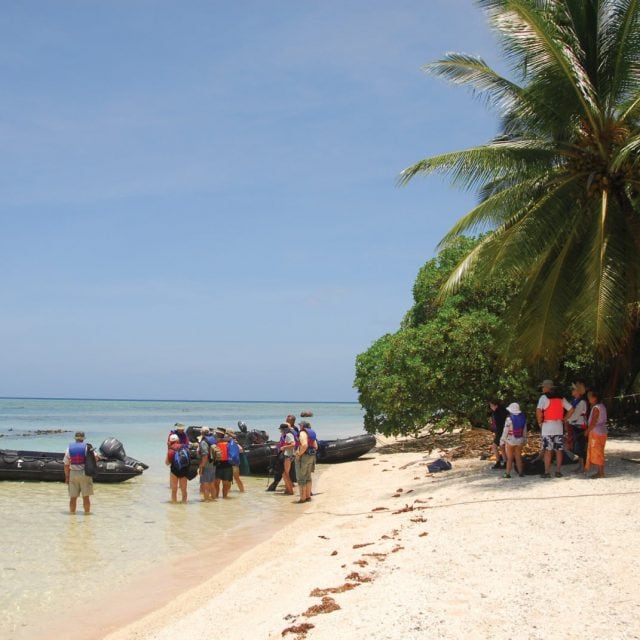


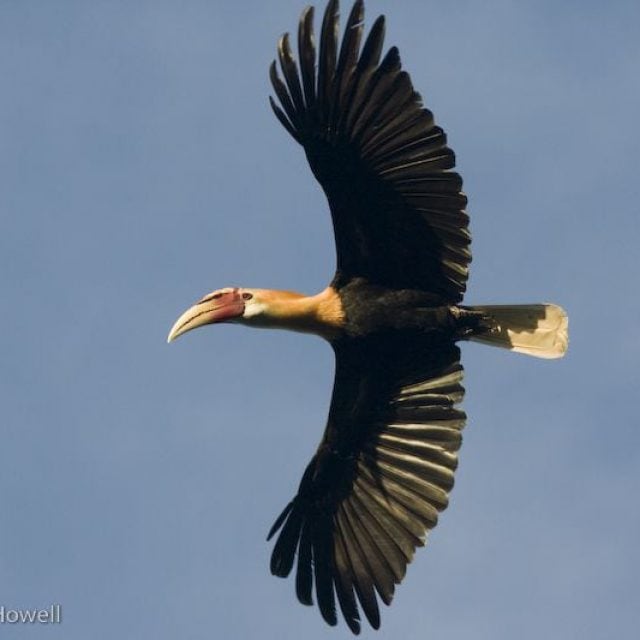

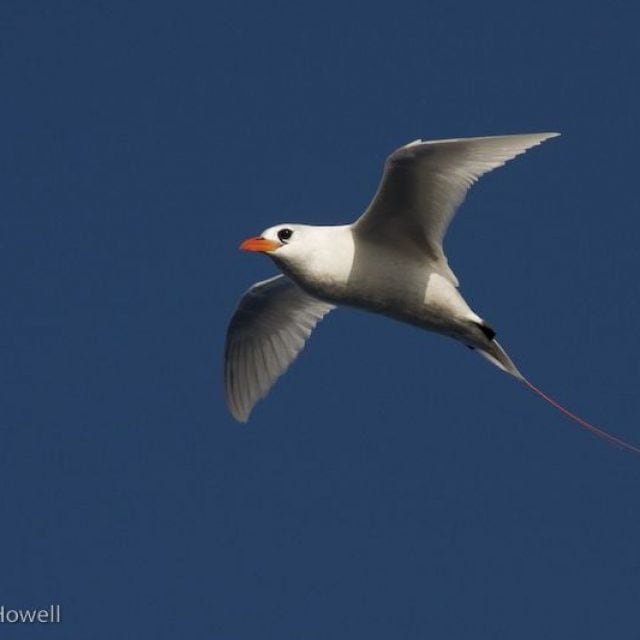



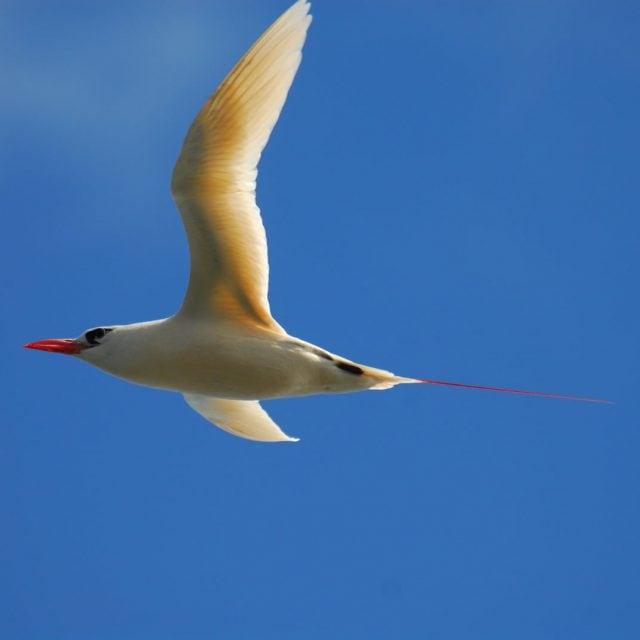
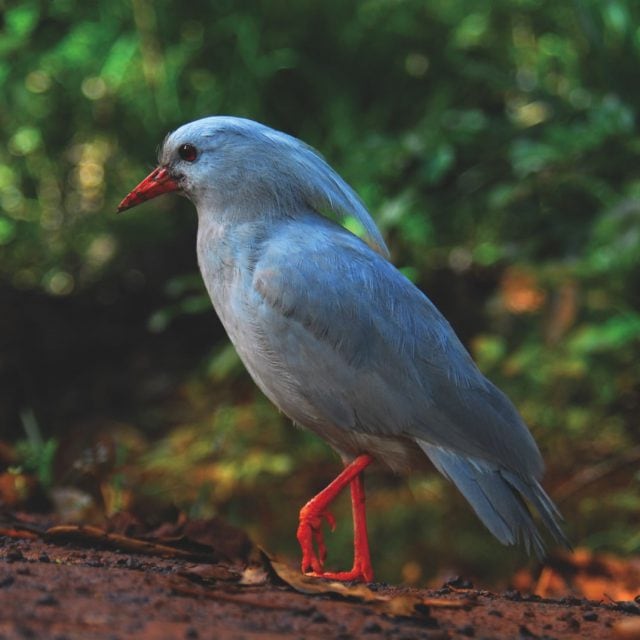
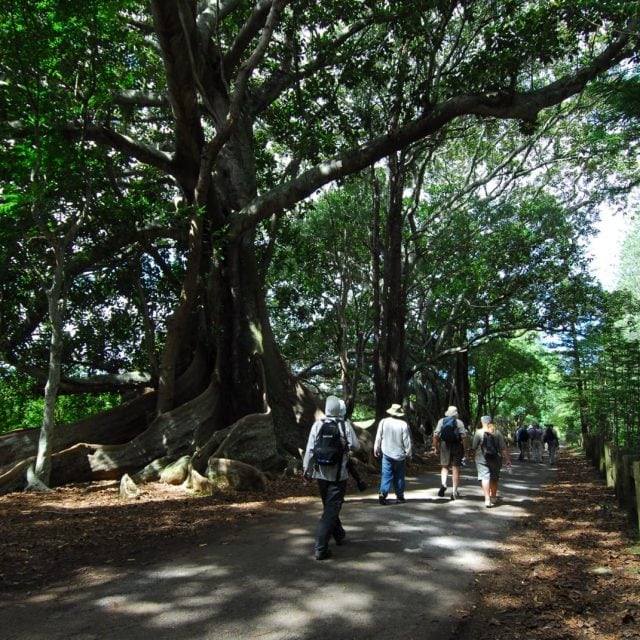

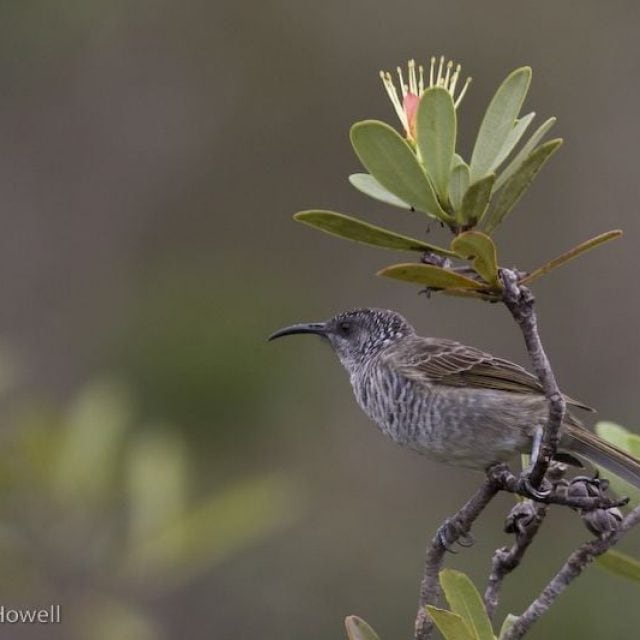
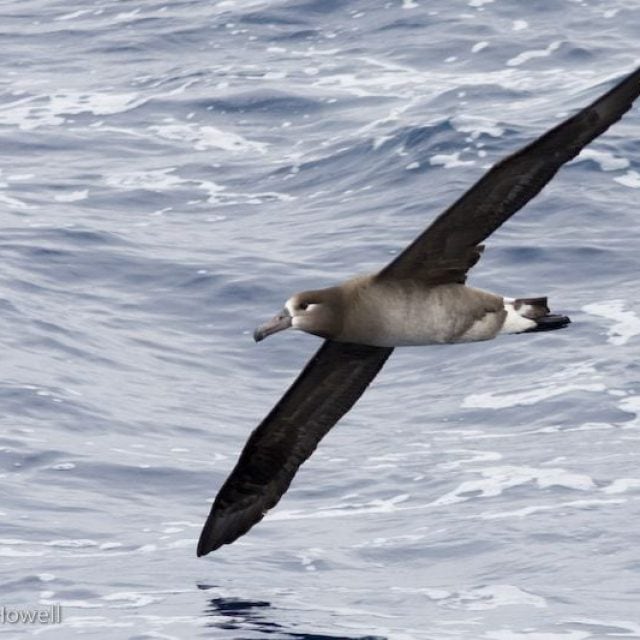
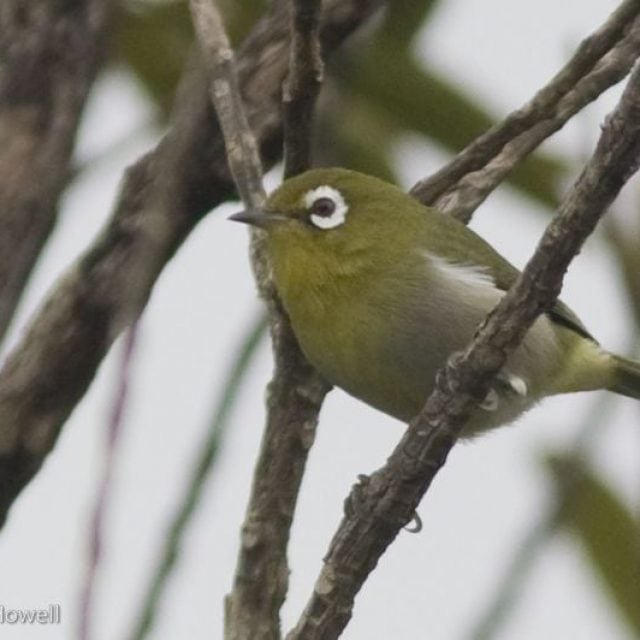

Itinerary
Day 1: Auckland, New Zealand
Join Heritage Adventurer this afternoon in the heart of New Zealand’s commercial capital, Auckland. The captain and expedition team will be waiting to greet you on arrival and show you to your cabin. You will have time to settle in and familiarise yourself with the ship; we will also take the opportunity to introduce you to your expedition team and our voyage plans. You are invited to join the expedition team in the Observation Lounge and up on the Observation Deck as we set sail for the Hauraki Gulf.
Day 2: Great Barrier Island and the Hauraki Gulf
We plan to spend this morning exploring the beauty of Great Barrier Island. Defining the eastern extent of the Hauraki Gulf, this beautiful island is largely forest covered and there will be opportunities to explore ashore or join a Zodiac cruise.
During the afternoon we will sail into the Hauraki Gulf. Continuing northwards we have had considerable success with finding the critically endangered New Zealand Storm-petrel in the water of the northern Hauraki Gulf. Other birds we might encounter include Buller’s Shearwaters, Australian Gannets, Little Blue Penguins, White-faced Storm-petrel, Grey-faced Petrel, Little Shearwater and Black Petrel.
This evening as we will be cruising along the east coast of the North Island, we will undoubtedly be accompanied by some Albatrosses.
Day 3: Bay of Islands
Wake this morning in the beautifully protected and historic waters of the Bay of Islands, after breakfast there will be an opportunity to explore ashore where you might be fortunate enough to find local endemics including saddleback and robins.
We then bid our farewells to New Zealand and set our course northwards, passing Cape Reinga this evening.
Day 4: At Sea
Heading north to Norfolk Island, we will take the opportunity to offer some lectures or presentations on seabird identification as well as briefings on what we can reasonably expect to see once ashore on Norfolk Island. Species that have been encountered on this leg previously include Grey-faced, Black-winged, Kermadec and White-necked Petrels. Both Wedge-tailed and Short-tailed Shearwaters, as well as Whitebellied and White-faced Stormpetrels, and White Terns and Red-tailed Tropicbirds have been recorded here.
Day 5: Norfolk Island
Upon arrival complete Australian customs, please note a visa may be required. Norfolk Island was a former Penal Colony and the island has been significantly modified, however, there are still some areas of forest and that is where we will visit. The four species we are keen to locate are the endemic Norfolk Island Parakeet, Slender-billed Whiteeye, Norfolk Robin and Norfolk Gerygone. Other birds recorded here include the Pacific Emerald Dove and Grey Fantail.
By midafternoon, we will say farewell to Norfolk and begin cruising north. The birding will continue from the ship and we will be on the lookout for White-bellied Storm-petrel, Providence Petrel and Little Shearwater – all species we have seen previously in these waters.
Day 6: At Sea
It should be good ‘birding’ today especially for petrels which could include Tahiti, Collared, White-necked, Providence and Kermadec Petrels.
Day 7: New Caledonia
This small and tropical island has been described as a taste of France in the Pacific, where Melanesian traditions blend with French sophistication. New Caledonia is a fragment of the ancient supercontinent of Gondwana, and it is believed that New Caledonia detached and became an island tens of millions of years ago. It is this isolation which explains both the extent of biodiversity and the incredible levels of endemism on this delightful tropical island.
We plan to sail along the southern shores of New Caledonia this morning and amongst the species we will be looking for is the New Caledonian Storm-petrel. This intriguing bird was first found on the WPO expedition in 2008 and has been seen several times since. Although seemingly closely related to New Zealand Storm-petrel, there are a number of important differences and it is now considered a long-lost species collected in Samoa more than 200 years ago, and not seen since!
This afternoon we will leave Heritage Adventurer and head to the forested slopes of Mount Koghi for the afternoon. This is often the best place to find several specialities including New Caledonian Goshawk, South Melanesian Cuckooshrike, Streaked Fantail, Southern Shrikebill, New Caledonian Crow and New Caledonian Grassbird as well as Striated Starling and Metallic Pigeon, before returning to the ship and enjoying an evening in port.
Day 8: New Caledonia and at Sea
We plan to depart from Noumea very early this morning to ensure we arrive early to Parc Provincial de la Rivière Bleue. This reserve is home to the unique Kagu, we hope to get good views of this extraordinary bird as well as many other endemics and localised species. These could include New Caledonian (Goliath) Imperialpigeon, Cloven-feathered Dove, New Caledonian (White-bellied) Goshawk, New Caledonian and Horned Parakeets, New Caledonian Myzomela, New Caledonian Whistler, New Caledonian Crow, New Caledonian Cuckooshrike, New Caledonian Friarbird, Crow and Barred Honeyeaters, Yellowbellied Robin, Green-backed White-eye and Red-throated Parrotfinch.
Days 9 to 10: At Sea
As we head north from New Caledonia, new seabirds could include Polynesian Storm-petrel, Tropical Shearwater, Providence Petrel, Vanuatu Petrel, Collared Petrel and Tahiti Petrel. Our route should also take us relatively close to the area where in 2019 we saw several individuals of a mysterious petrel dubbed the ‘Heritage Lava Petrel’ which has so far defied identification. This is also time to catch up with diaries, checklists and downloading of photos.
Day 11: Santa Ana, Solomon Islands
Santa Ana, also known as Owaraha or Owa Raha, is a relatively small coral island which was first sighted by Europeans in 1568. Located just a few miles offshore from Makira Island, Santa Ana is one of the most easterly of the main islands in the Solomon Islands archipelago. Santa Ana has a distinctive avifauna so we can expect to find an interesting mixture of birds including small island species such as Silver-capped Fruit-dove mixed with some of the Makiran endemics like White-headed Fruit-dove, Sooty Myzomela, Makira Honeyeater, Makira Flycatcher and White-collared Monarch. Santa Ana is also home to an endemic and highly distinctive subspecies of Rufous Fantail and we will also be looking for Sanford’s (Solomon) Sea-eagle and Oriole Whistler.
Day 12: Anuta Island in the Makira Group
Makira Island is located in the eastern Solomons. It is the most easterly of the main islands in the archipelago. Anuta is a small inshore island on the south shore. We anchor close to Anuta and local guides escort us along a former forestry road that winds up and inland where there is still some decent forest. Here we can expect to see an exciting range of new species including many which are either endemic to Makira or otherwise only occur on a few other islands. These could include White-headed Fruit-dove, Chestnut-bellied Imperial-pigeon, Makira Honeyeater (San Cristobal Melidectes), San Cristobal Starling, Makira Flycatcher, Makira Cicadabird, White-collared Monarch, Sooty Myzomela and Mottled Flowerpecker. Other species could include Redknobbed and Island Imperialpigeon, Brahminy Kite, Pied Goshawk, Pacific Baza and Sanford’s (Solomon) Sea-eagle.
Day 13: Honiara
We will anchor off Honiara. It is an early morning departure from the ship to take us into the forested mountains behind Honiara, here we are on the lookout for a number of the many Guadacanal endemics. These could include Ultramarine Kingfisher, Yellow-eyed, White-bellied and Solomons Cuckooshrikes, Common Cicadabird, Chestnut-bellied and Black-and-white Monarch, Steel-blue Flycatcher, Midget Flowerpecker, Brown-winged and Singing Starling, Yellow-faced Myna, Olive-backed Sunbird and the Black-headed Myzomela.
There should also be numbers of parrots and pigeons including the Cardinal and Yellow-bibbed Lory, Singing and Eclectus Parrot, Finsch’s Pygmy Parrot, Ducorps’ Cockatoo, Mackinlay’s Cuckoo Dove, Red-knobbed Imperialpigeon and Claret-breasted and Superb Fruit-doves.
Day 14: Tetepare Island
Located in the New Georgia group of islands, Tetepare is an excellent example of a community conservation project as the entire island has been set aside as a community run reserve. Long and rugged, this island is cloaked in lush tropical forests and fringed with reefs that are teeming with marine life; it is the largest uninhabited tropical island in the Southern Hemisphere.
There are a number of new Solomon endemics to look for here including the highly localised Dark-eyed White-eye. Other possibilities include Melanesian Scrubfowl, Claret-breasted Fruit Dove, Island Imperial-pigeon, Buffheaded Coucal, Crimson-rumped Myzomela, Cockerell’s Fantail, Kolombangara Monarch and, if we are extremely fortunate, both the Nicobar Pigeon and the extremely poorly known Solomons Nightjar.
Day 15: Kolombangara Island
Kolombangara is a dormant or semi-extinct volcano, 1,800 metres high and last active probably about 10,000 years ago. Large tracts of this impressive island have been protected by the local communities for conservation, including almost the entire island above 400 metres, there is also a significant sustainable forestry industry growing mainly teak and eucalyptus at lower elevations.
Birdlife is generally plentiful and we hope to see the spectacular Sanford’s (Solomon) Sea-eagle, Cardinal, Duchess and Meek’s Lorikeets, Kolombangara and White-capped Monarchs, Crimson-rumped Myzomela, Ducorps’ Cockatoo and Metallic and Singing Starling. We may also have an opportunity to look for the elusive Roviana Rail during our time ashore. We complete customs formalities here prior to departing the Solomon Islands tonight.
Day 16: Off the coast of Bougainville
We are at sea today and our target bird is Heinroth’s Shearwater if we haven’t already seen it. Our course takes us up the coast of Bougainville before crossing a deep water canyon known as the New Britain Trench.
This area has proved very productive for cetaceans on previous voyages and the species we have seen include Sperm Whale, False Killer Whale, Fraser’s Dolphin and both Dwarf and Pygmy Sperm Whales.
Day 17: Off the coast of New Ireland
Our target bird today is the critically endangered and poorly known Beck’s Petrel. We begin chumming at day-break in an area where we have found these birds on previous occasions. This area is also one where we have previously found Heinroth’s Shearwater, so we will also be on the lookout for this very localised species.
This is another area where a number of different species of cetaceans have been seen previously including Melon-headed Whale and Dwarf and Pygmy Sperm Whales.
Days 18 to 19: At Sea
Lazy and relaxing days at sea, you can bird from a number of locations, download photos, write logs or notes, or simply relax in the Observation Lounge or on the Observation Deck, with a drink in the Bar and Lounge, or find a quiet place with a book. Our team will be maintaining a constant pelagic watch for birds and mammals and you are welcome to join them.
There are a number of species including Bulwer’s Petrels, Wedge-tailed Shearwaters, White-tailed Tropicbirds, White and Sooty Terns and both Great and Lesser Frigatebirds that we could see and photograph.
Days 20 to 21: Caroline Islands
We will enter the protected (and historic) waters of the Chuuk (Truk) Lagoon this morning. Once we are clear of Customs we will head ashore and join the guides birding on the main island of Weno. There is a good chance we can see species such as Purple-capped Fruit-dove, Oceanic Flycatcher, Caroline Reed Warbler, Caroline Islands Swiftlet, Caroline Islands White-eye, Micronesian Myzomela and Micronesian Starling.
The next morning there will be an option to take a long Zodiac ride to Tol South Island where after a very demanding climb (especially in the heat and humidity of these islands) there is a reasonable chance of seeing the endemic Teardop (or Great Truk) White-eye and Chuuk Monarch. Alternatively join our expedition guides exploring the island of Dublon or take the opportunity for a snorkel during the morning.
Days 22 to 25: At Sea
More lazy relaxing days at sea. Just remember, ‘God does not deduct from one’s allotted life span time spent sailing’ so relax and enjoy. The birding is quiet in these latitudes, but if you put in the time there are some good sightings to be had. Birds that we may see include Matsudaira’s Storm-petrel, Bonin and Bulwer’s Petrels, Wedge-tailed and Bannerman’s Shearwaters.
As we approach the Bonin chain of islands we will keep a particular lookout for the newly described Bryan’s Shearwater. This area is also good for cetaceans, especially Humpback Whales which are known to occur here in reasonable numbers.
Day 26: Chichi-jima Island
We will complete Customs and arrive into Japan at the largest of the Bonin Islands, Chichi-jima, before exploring the settlement and the surrounding area. Birds that we may see include Japanese Bush Warbler, Blue Rock Thrush, Browneared Bulbul and Japanese Whiteeye.
During the afternoon we will look for the critically endangered Bryan’s Shearwater. This species is only known to breed on a small islet off Chichi-jima and during our 2019 expedition several individuals were seen as birds returned to their burrows prior to dusk. We should also see good numbers of Bannerman’s Shearwaters which also breed here.
Day 27: Torishima Island
Landings are not permitted at Torishima Island, but we cruise close to shore in the hope of seeing the Short-tailed or Steller’s Albatross, the majority of the world's population of this vulnerable species breed on this island. Other species that could be present include Black-footed and Laysan Albatrosses, Streaked Shearwater, and both Tristam’s and Matsudaira’s Storm-petrels.
Day 28: Hachijō-jima Island
Located in the Izu Islands archipelago, Hachijo-Jima is a picturesque subtropical volcanic island. The island’s two main mountains are the volcanoes Mt Mihara in the south-east and Mt Nishi in the north-west. The island is a major exporter of Phoenix aloe vera, so you may pass numerous plantations of both. The island is home to the endemic Izu Thrush, Ijima’s Leaf-warbler and Owston’s Tit. We will also look for Japanese Wood Pigeon, Japanese Pygmy Woodpecker and Japanese (Izu) Robin.
We will end our birding on the expedition by sailing close to some islets where we hope to find Japanese Murrelet. Tonight we enjoy a farewell and celebratory dinner with newfound friends.
Day 29: Yokohama, Japan
After breakfast and arrival formalities have been completed in to Yokohama, we will disembark the vessel. There will be a complimentary transfer from the ship to Yokohama City Air Terminal. We ask you not to book any onward flights (Domestic or International) until mid-afternoon to account for any delays and the time it takes to travel to the airports.
Note: During our voyage, circumstances may make it necessary or desirable to deviate from the proposed itinerary. This can include poor weather and opportunities for making unplanned excursions. Your Expedition Leader will keep you fully informed.
What to Expect
What to Expect
The focus and emphasis of every expedition is getting you ashore as often as possible for as long as possible with maximum safety and comfort. Our Expeditions are accompanied by some of the most experienced naturalists and guides, who have devoted a lifetime to field research in the areas that we visit.
Every day we offer a combination of interesting shore excursions and fun shipboard activities. Our excursions onshore will involve a relatively low level of exertion, but you will need a reasonable level of mobility to get up and down the gangway and climb into and out of Zodiacs (with assistance).
When the ship is underway, it is a wonderful time to join a naturalist on deck, take photos of the stunning scenery, or get caught up on some reading in the library. In addition, our resource staff will give informative talks at various times throughout the voyage.
Meals in the ship's dining room are a great opportunity to meet new friends and recount the day's adventures. Special diets can be accommodated with advance notice. Safety is also a top priority with Eagle-Eye Tours – our team has extensive experience in the field, and all of our Voyages are run in conjunction with operators with the highest safety standards.
We know that everyone travels for different reasons. Over the years, however, we have found one common element among the guest who choose to travel with us - a thirst of knowledge and authentic experience. Knowing this drives us to ensure the highest quality learning experience on our trips, by taking time to carefully design each trip we offer.
Ship & Deck Plan
Ship & Deck Plan
Heritage Adventurer

Heritage Adventurer is a true pioneering expedition vessel of exceptional pedigree. Often referred to as the ‘Grande Dame of Polar Exploration’ due to her celebrated history and refined design, she was purpose-built for adventure in 1991 at Finland’s Rauma shipyard and specifically designed for Polar exploration.
Setting a peerless standard in authentic expedition travel, Heritage Adventurer (formerly known as MS Hanseatic) combines the highest passenger ship iceclass rating (1A Super) with an impressive history of Polar exploration. Having held records for the most northern and southern Arctic and Antarctic navigations, and for traversing both the Northwest and Northeast Passages, makes Heritage Adventurer perfect for pioneering New Zealand-based signature experiential expedition travel.
Originally designed to accommodate 184 guests, Heritage Adventurer now welcomes just 140 expeditioners ensuring spacious, stylish and comfortable voyages, while a fleet of 14 Zodiacs ensures all guests are able to maximise their expedition adventure. Heritage Adventurer proudly continues our traditions of exceptional, personalised expedition experiences.
Learn More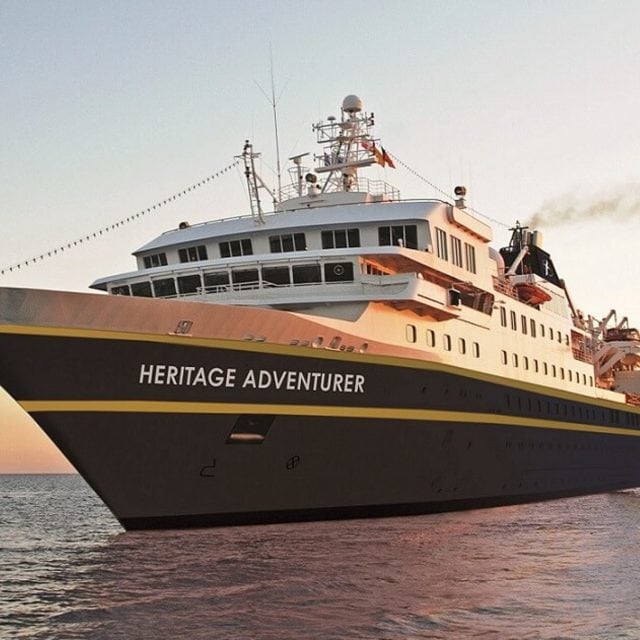
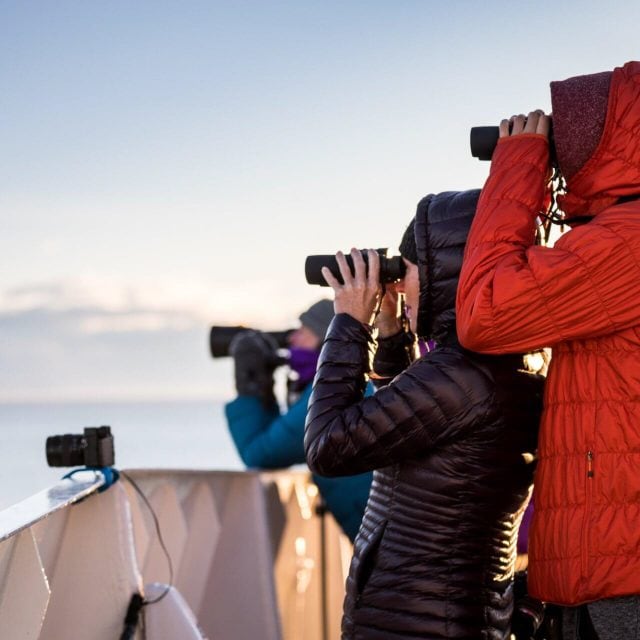

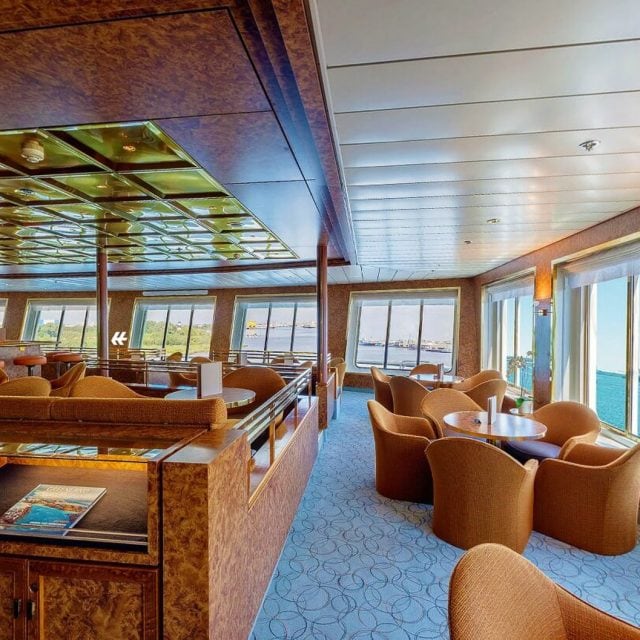
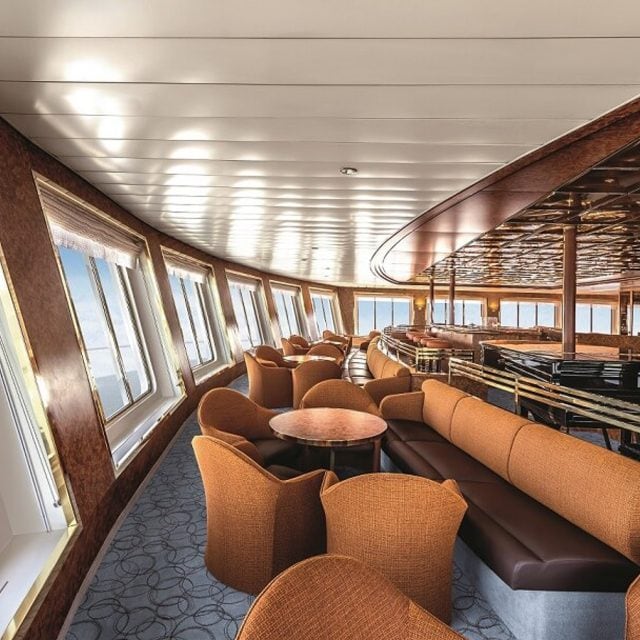

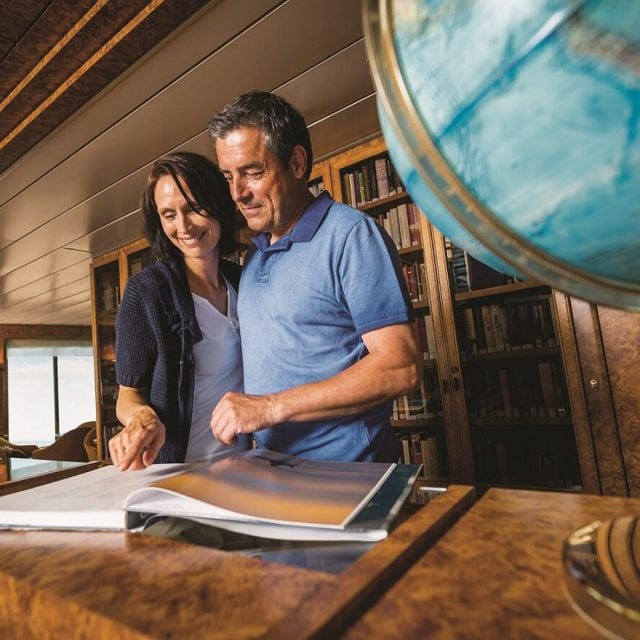


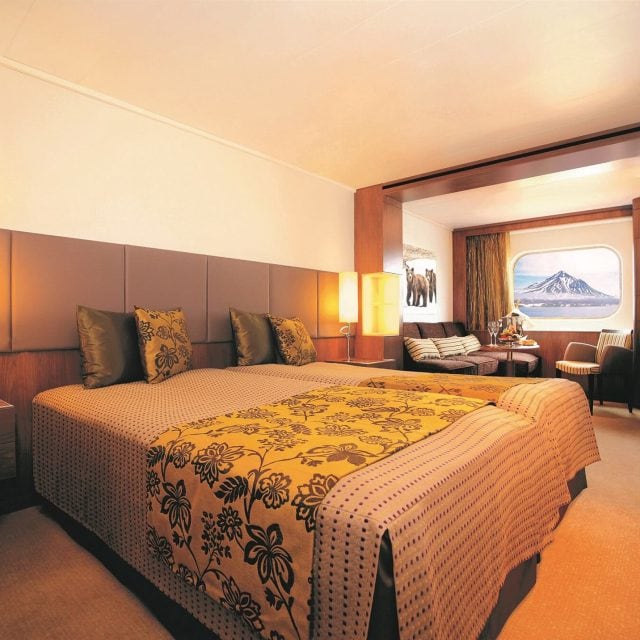




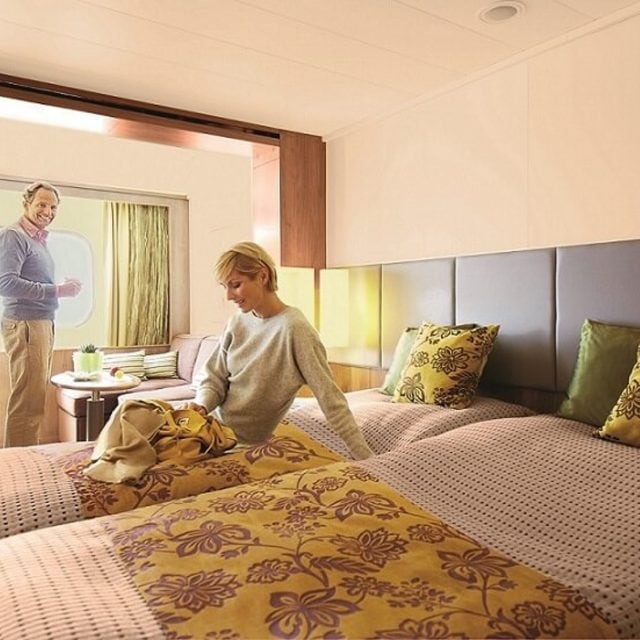

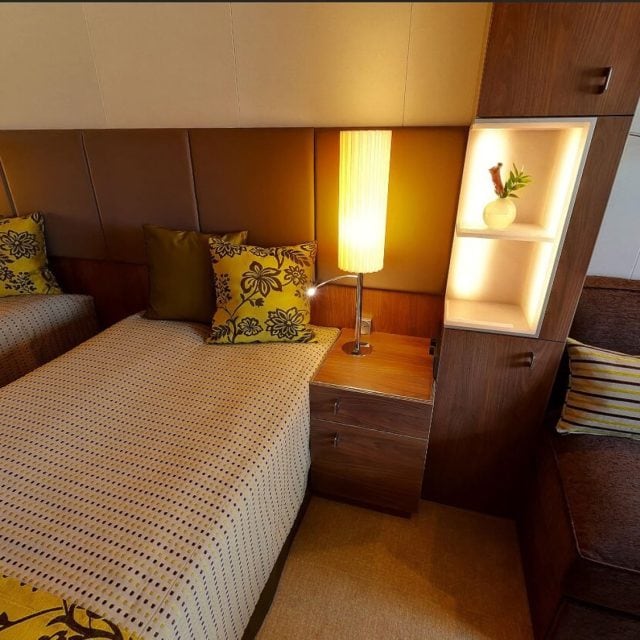
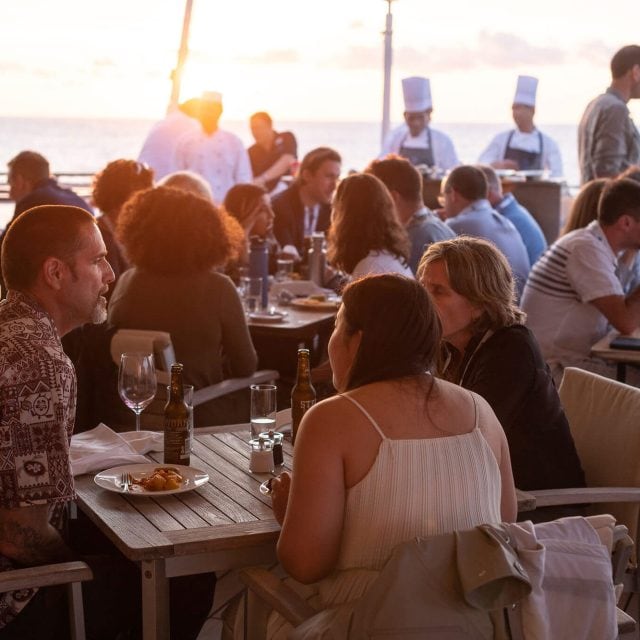
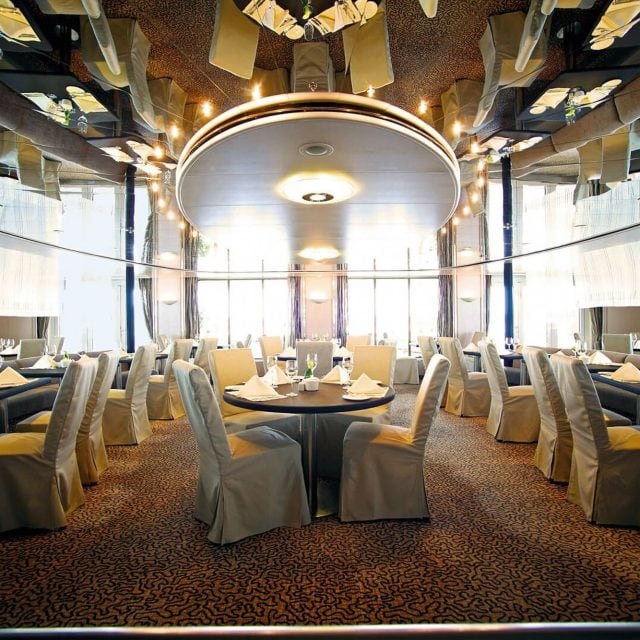

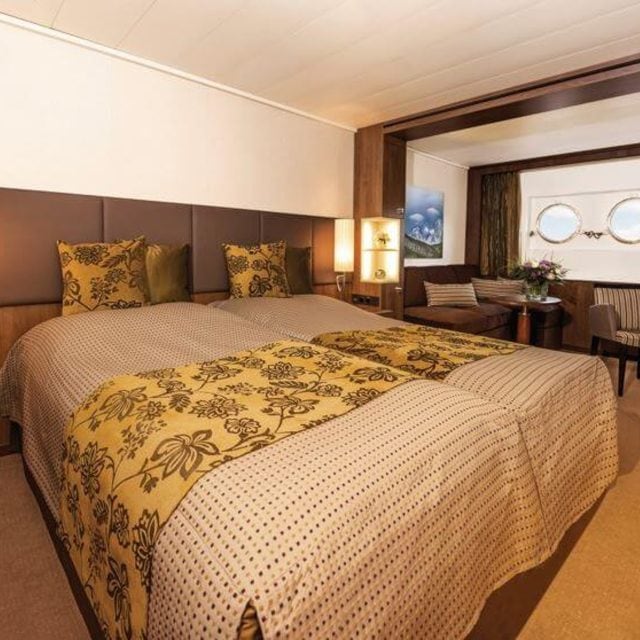
Featured Wildlife
Featured Wildlife
While we cannot guarantee sightings of the birds or mammals listed below, we believe that encountering these species is quite likely during this tour.
- Little Blue Penguin
- Fluttering Shearwater
- Streaked Shearwater
- Heinroth’s Shearwater
- Gould’s Petrel
- Black-winged Petrel
- White-naped Petrel
- Tahiti Petrel
- Collared Petrel
- Beck’s Petrel
- New Zealand Storm-Petrel
- Polynesian Storm-Petrel
- New Caledonian Storm-Petrel
- Japanese Murrelet
- Solomon Sea-Eagle
- Norfolk Island Parakeet
- Singing Parrot
- Finsch’s Pygmy Parrot
- Kagu
- Crow Honey-eater
- Cloven-feathered Dove
- New Caledonian (Goliath) Imperial Pigeon
- Red-knobbed Imperial-Pigeon
- Silver-capped Fruit Dove
- Rennell Shrikebill
- Bare-eyed White-eye
- Slender-billed White-eye
- Rennell Fantail
- Cardinal Myzomela
- Sooty Myzomela
- San Cristobal Melidectes
- White-collared Monarch
- Yellow-bellied Robin
- Mottled Flowerpecker
- San Cristobal Singing Starling
- Yellow-eyed Cuckoo-Shrike
- Solomon’s Cuckoo-Shrike
- Cicadabird
- Steely Blue Fly-catcher
- Yellow-vented Myzomela
Past Tour Checklists
Past Tour Checklists
View the list of birds and other wildlife we encountered on our past tours.







